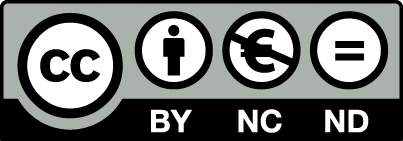Prior to the submission of the application, an ambitious but realistic Plan for the Dissemination of the project’s results was designed, including all relevant aspects of the visibility and dissemination of the project, the Erasmus+ Programme, and its results, especially the “E-LEARNING COURSE FOR THE TRAINING OF TEACHERS ON THE INCLUSION OF ROMA STUDENTS IN THE CLASSROOMS” and “THE VIRTUAL KIT AGAINST DISCRIMINATION”.
One of the most relevant aspects is the definition of the main target groups of this Plan, in this way we differentiate between the internal recipients of the organizations participating in the project and the external recipients, divided according to geographic level.
– Internal recipients
The organizations participating in this project have diverse profiles, from roma women’s organizations specializing in this subject, which have among their members trainers and a multitude of students with obstacles, to organizations that are experts in the creation of educational materials for groups with obstacles or SSNN, such as Redtree Making Projects and Smallcodes, and expert foundations in the fight against hate speech and the defense of the rights of groups that suffer some type of discrimination, that have among their members and volunteers political representatives of the highest level (like MEPs) and federations of educational organizations like schools, high-schools, adult training schools, etc. This is the case of Greta du Velay. In this way, only with internal dissemination can this project achieve a great impact on the main target groups, since they are part of the partner organizations themselves:
- Roma students:
- Students without obstacles.
- Teachers.
- Political representatives.
- Members, volunteers, and professionals.
– External recipients
In addition to internal dissemination, the Project’s Dissemination Plan contemplates multiple internal dissemination activities, to maximize the impact of the project and in this way enable the largest possible number of teachers and students from all over Europe to use the results and Intellectual Outputs of the project, thus having a positive impact on educational inclusion and stopping hate speech, racism, xenophobia, etc.; which all boost bullying in schools. In this way, the main target groups have been selected according to geographic level.
- Local and regional level:
- Schools and educational organizations.
- Educational policy leaders at the local and regional level.
- National level (Spain, Portugal, Romania, Italy, France, and Slovenia):
- Secondary education teachers.
- Students with obstacles who suffer bullying.
- Students in general.
- Political representatives at the national level.
- European level:
- Roma organizations.
- Organizations that work for social and educational inclusion.
- The educational community in general.
- European networks of educational centers.
- Organizations of allied European Networks.
- Political representatives at the European level.
In order to reach the target groups for dissemination at the different geographical levels, responsibilities have been distributed among the partners, each one being responsible for dissemination at the local and regional level within their scope of action. For countries in which a single partner participates, as in the case of Slovenia, France, and Italy, they have been responsible for dissemination at the national level; but for countries with several partners, like Spain and Portugal, a National Dissemination Commission have been created, comprised of the participating organizations of this country. This national commission also involves the associated organizations (those that do not participate directly as formal partners but have collaborated in various aspects of the project, like in the dissemination and use of the results). To coordinate all these activities, a global Dissemination Commission was created where all partner organizations were represented, being responsible for the dissemination at the European level, for which it also had the support of several European networks with a presence in many European countries.
.
.




